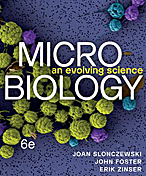Mycobacterium phlei: Difference between revisions
No edit summary |
No edit summary |
||
| Line 21: | Line 21: | ||
==Description and Significance== | ==Description and Significance== | ||
Early findings of Mycobacterium Phlei have reported the microorganism existing in a rod shaped, but there have also been reports of a coccoid form depending on environmental conditions. The coccoid form is the primary relaxed form of the organism and when introduced to nutrients, Mycobacterium Phlei transitions back to the rod shape (Das et al., 2016). The microorganism can usually be found in water ecosystems, forest biomes and in drinking water (Egamberdieva et al., 2011). The study of M. Phlei, enables a more comprehensive understanding of other pathogenic mycobacteria such as Mycobacterium Tuberculosis. | |||
==Genome Structure== | ==Genome Structure== | ||
The size of the genome of M. Phlei is 5.64 million base pairs (Abdallah et al., 2012). In addition, the GC (guinane-cystosine) content of the genome is 69.24%, making it one of the highest among Mycobacteria. | |||
Describe the size and content of the genome. How many chromosomes? Circular or linear? | Describe the size and content of the genome. How many chromosomes? Circular or linear? | ||
Other interesting features? What is known about its sequence? | Other interesting features? What is known about its sequence? | ||
| Line 36: | Line 40: | ||
==References== | ==References== | ||
https://dergipark.org.tr/tr/download/article-file/121072 | |||
https://www.ncbi.nlm.nih.gov/pmc/articles/PMC4860684/ | |||
https://www.ncbi.nlm.nih.gov/pmc/articles/PMC3370867/ | |||
[Sample reference] [http://ijs.sgmjournals.org/cgi/reprint/50/2/489 Takai, K., Sugai, A., Itoh, T., | [Sample reference] [http://ijs.sgmjournals.org/cgi/reprint/50/2/489 Takai, K., Sugai, A., Itoh, T., | ||
and Horikoshi, K. "''Palaeococcus ferrophilus'' gen. nov., sp. nov., a barophilic, | and Horikoshi, K. "''Palaeococcus ferrophilus'' gen. nov., sp. nov., a barophilic, | ||
Revision as of 19:30, 14 November 2022
Wiki Page Template:
Classification
Bacteria, Actinobacteria, Actinomycetia, Corynebacteriales, Mycobaceriaceae, Mycolicibacterium
NCBI link to find]
Species
|
NCBI: [https://www.ncbi.nlm.nih.gov/Taxonomy/Browser/wwwtax.cgi?mode=Info&id=1007084&lvl= 3&lin=f&keep=1&srchmode=1&unlock] |
Mycobacterium Phlei
Description and Significance
Early findings of Mycobacterium Phlei have reported the microorganism existing in a rod shaped, but there have also been reports of a coccoid form depending on environmental conditions. The coccoid form is the primary relaxed form of the organism and when introduced to nutrients, Mycobacterium Phlei transitions back to the rod shape (Das et al., 2016). The microorganism can usually be found in water ecosystems, forest biomes and in drinking water (Egamberdieva et al., 2011). The study of M. Phlei, enables a more comprehensive understanding of other pathogenic mycobacteria such as Mycobacterium Tuberculosis.
Genome Structure
The size of the genome of M. Phlei is 5.64 million base pairs (Abdallah et al., 2012). In addition, the GC (guinane-cystosine) content of the genome is 69.24%, making it one of the highest among Mycobacteria.
Describe the size and content of the genome. How many chromosomes? Circular or linear? Other interesting features? What is known about its sequence?
Cell Structure, Metabolism and Life Cycle
Interesting features of cell structure; how it gains energy; what important molecules it produces.
Ecology and Pathogenesis
Habitat; symbiosis; biogeochemical significance; contributions to environment.
If relevant, how does this organism cause disease? Human, animal, plant hosts? Virulence
factors, as well as patient symptoms.
References
https://dergipark.org.tr/tr/download/article-file/121072
https://www.ncbi.nlm.nih.gov/pmc/articles/PMC4860684/
https://www.ncbi.nlm.nih.gov/pmc/articles/PMC3370867/
[Sample reference] [http://ijs.sgmjournals.org/cgi/reprint/50/2/489 Takai, K., Sugai, A., Itoh, T., and Horikoshi, K. "Palaeococcus ferrophilus gen. nov., sp. nov., a barophilic, hyperthermophilic archaeon from a deep-sea hydrothermal vent chimney". International Journal of Systematic and Evolutionary Microbiology. 2000. Volume 50. p. 489-500.]
Author
Page authored by _____, student of Prof. Bradley Tolar at UNC Wilmington.
[[Category:Pages edited by students of Bradley Tolar at UNC Wilmington]]

